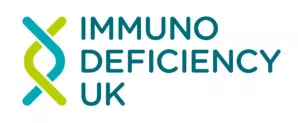Significant advances in bone marrow transplant for Chronic Granulomatous Disorder (CGD)
A landmark study, published in the medical journal The Lancet has demonstrated the success of using reduced intensity conditioning as a pre-transplant treatment for people undergoing bone marrow transplant (BMT) for CGD. Significantly this was the case for patients who were considered high risk for BMT including both young people and adults who had had several infections and were deemed unsuitable for BMT using standard conditioning procedures.
The study involved 16 centres in 10 countries worldwide and included the BMT units at Great Ormond Street Hospital, University College Hospital, Great North Children’s Hospital, Newcastle and the University Children’s Hospital in Zurich.
‘This is one of the biggest studies of its kind, involving 56 patients with either X-linked CGD or autosomal recessive CGD and shows the power of international collaboration for rare diseases such as CGD’, said Dr Tayfun Güngör, the lead author and principal investigator and Assistant Professor of Pediatric Stem Cell Transplantation at the University Children’s Hospital Zürich. ‘The study covered patients from 2003 to 2012 and used carefully tailored doses of the chemotherapy drug busulfan to prepare patients for stem cell transplant’.
Use in ‘high-risk’ patients
About three-quarters of the patients treated had what clinicians call ‘high-risk’ features. This included patients with one or more life-threatening infections in the past, having serious infections that were difficult to treat or inflammatory problems dependent on the use of steroids. These are patients who would not be able to tolerate full conventional conditioning treatments.
Fertility may be preserved using this conditioning
The results are impressive. Adolescent and adult patients, aged between 14-39 years, had survival rates of better than 9 out of 10. They also had a low occurrence of graft versus host disease. Only 3 patients of 56 had graft failure. Two adults fathered children showing that fertility may be preserved using this milder conditioning procedure.
Dr Tayfun Güngör again – ‘By tailoring the doses of busulfan and carefully sampling patients, we achieved a survival rate of 93%. The study showed this success was independent of the age of the patient, even in those with predicted poor outcomes or highly at risk of graft failure and mortality’.
The success rate was also independent of the type of donor match used for the BMT. Of the 56 patients studies, 21 had HLA-matched related-donor transplants. For the other 35 patients, 25 had a 10/10 match, and 10 had a 9/10 match.
Extension of these studies to other PIDs
‘The results suggest that stem cell transplants should be considered, even in high risk CGD patients, if a matched unrelated donor is identified. What I would like to do is to extend these studies to other PIDs and use this protocol for CGD patients with 8/10 and 7/10 matched donors and for transplants using stem cells from umbilical cord blood’, said Dr Güngör.
You can access the abstract of this publication here.
Posted August 2014





